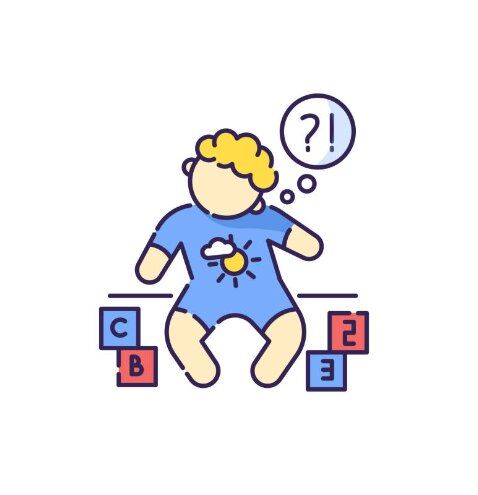What Causes It?
Genetic factors - Chromosomal abnormalities, single-gene disorders, or genetic variations affecting development. Studies from Indian genetic centers have identified unique genetic patterns in some cases of developmental delay.
Prenatal complications - Maternal infections, exposure to toxins, alcohol, or certain medications during pregnancy. In India, factors like maternal anemia, which affects approximately 50% of pregnant women, may contribute to developmental risks.
Prematurity - Being born significantly before the due date, especially before 32 weeks gestation. India has a preterm birth rate of approximately 13%, one of the highest in the world.
Low birth weight - Weight less than 2500 grams (5.5 pounds) at birth. In India, the prevalence of low birth weight babies is around 18-20%, significantly higher than the global average.
Birth trauma or complications - Oxygen deprivation, brain bleeds, or other birth injuries. Limited access to skilled birth attendants in rural areas of India may increase these risks.
Environmental factors - Limited stimulation, neglect, or adverse childhood experiences. Socioeconomic disparities and urban-rural differences in India can affect early childhood environments.
Nutritional deficiencies - Inadequate nutrition during critical periods of brain development. Childhood malnutrition remains a significant public health issue in India, with approximately 35% of children under five being underweight.
Chronic medical conditions - Conditions like congenital heart disease, chronic lung disease, or recurrent infections. In India, recurrent respiratory infections linked to air pollution and indoor cooking smoke are particularly relevant.
Neurological disorders - Epilepsy, cerebral palsy, or structural brain abnormalities. Studies from Indian centers report prevalence rates of childhood epilepsy at approximately 6-8 per 1,000 children.
Sensory impairments - Hearing or vision problems that affect interaction with the environment. In India, untreated middle ear infections and limited access to vision screening in rural areas can contribute to undetected sensory impairments.
Metabolic disorders - Conditions affecting how the body processes nutrients and energy. Consanguineous marriages, which are common in some communities in India, may increase the risk of recessive metabolic disorders.
Toxic exposures - Lead poisoning or other environmental toxins. Lead exposure from sources like paint, batteries, and traditional remedies remains a concern in parts of India.
Infections - Meningitis, encephalitis, or other serious infections affecting the brain. India has higher rates of certain CNS infections like Japanese encephalitis and tubercular meningitis compared to Western countries.
Unknown causes - In many cases, no specific cause can be identified despite thorough evaluation. Limited access to advanced diagnostic technologies in some parts of India may contribute to higher rates of undiagnosed causes.
Signs & Symptoms
Symptoms vary widely depending on the type and severity of delay, but may include:
Motor delays:
Not reaching for and grabbing objects by 3-4 months.
Not rolling over in either direction by 6 months.
Not sitting without support by 9 months.
Not crawling by 12 months.
Not walking by 18 months.
Persistent use of only one side of the body.
Language and speech delays:
Not babbling by 6 months.
Not responding to sounds or name by 9 months.
No meaningful words by 15 months.
Unable to follow simple instructions by 18 months.
Speaking fewer than 50 words by 24 months.
Not putting two words together by 2 years.
Speech that is difficult to understand by age 3.
Cognitive delays:
Limited problem-solving skills compared to peers.
Difficulty understanding simple concepts.
Trouble remembering things.
Challenges with attention and concentration.
Social and emotional delays:
Limited eye contact or social smiling by 3 months.
Not showing interest in interactive games like peek-a-boo by 8 months.
No separation anxiety from parents by 12 months.
Limited imitation of others or pretend play by 24 months.
Difficulty engaging with peers appropriately.
Self-help skill delays:
Significant difficulty with feeding, dressing, or toileting compared to peers.
Note: Any loss of previously acquired skills (regression) is a red flag requiring prompt medical attention.
